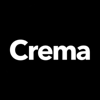Product & UX/UI Design for Hyperscale Data Center Company
- Product Design UX/UI Design
- Confidential
- Jan. 2024 - Sep. 2025
"We were extremely pleased with their work product and style."
- Real estate
- Overland Park, Kansas
- 11-50 Employees
- Online Review
- Verified
Crema provided product and UX/UI design services for a hyperscale data center company. The team was responsible for building the GUI for an AI-powered identification tool and providing strategic guidance.
Crema's efforts resulted in a working platform that met the client's objectives. The team consistently showed prototypes, received feedback, delivered work on time, and was communicative about roadblocks. Crema's responsiveness, skill level, enthusiasm, and organization were hallmarks of their work.



